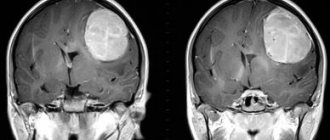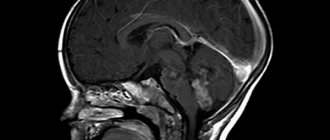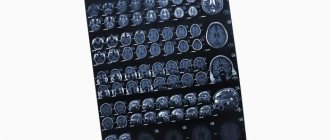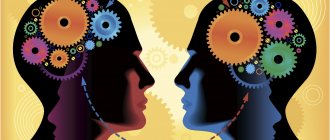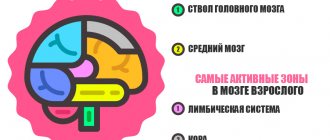Children with weakened right hemisphere function usually do well academically, but may have difficulties socially and behaviorally. Our brain consists of two hemispheres. Children with behavioral, academic, social or other problems often have an imbalance where they preferentially use one part of the brain. This causes one side of the brain to become stronger while the other develops more slowly.
Although research has shown that we use our entire brain to process information, children tend to exhibit characteristics associated with the "dominance" of different hemispheres of the brain. It was once believed that the brain was static, unable to grow or change. But extensive research and in-depth study of epigenetics have shown that the brain is remarkably adaptable, capable of creating new neural connections in response to stimuli in the environment. This is a branch of science called neuroplasticity.
Understanding the different brain responses can have a big impact on how your children learn. Problems most commonly reported by children and adolescents due to the apparent dominance of one hemisphere when processing information include:
- Tendency to get distracted and problems concentrating
- Uneven attention to detail
- Problems with time management
- Problems with organization
- Impulsiveness
- Mood swings and behavioral fluctuations
- Sensory processing problems
Brain Balance does not require the child to have a medical diagnosis, and we are not talking about clinical diagnosis of diseases. In this article, we focus on understanding the challenges these children face and helping them develop and strengthen neural connections. Research has found that the unique challenges your child faces may be related to weak connections in different areas of the brain. Fortunately, homeschoolers (virtually every homeschooler these days) have endless opportunities for creativity, individualization, and effectiveness in meeting the needs of right-brain dominant children.
What if your child is right-brain dominant?
Scientists have proven that children with a strong left hemisphere love structure, focus on details, love organization and logic. They can easily express their feelings and thoughts in words. Memorization comes easily to them, and left-brain dominant students tend to learn best through repetition. These children work efficiently using a step-by-step approach, enjoy working independently, have a good sense of time, and are objective.
Writing and spelling tend to come easily to these students, and they tend to learn well “by instruction.” Arithmetic, with its logical sequential steps, is also a subject in which left-brain dominant children often excel, although conceptual math subjects such as geometry or chemistry may be more difficult for them. Children with a strong left brain tend to benefit from auditory learning and often demonstrate academic ability early.
On the other hand, right-brain oriented students have visual abilities. They focus on holistic concepts rather than details and tend to be unstructured and impulsive and creative. They often demonstrate mastery of art or music. These children do not like to work independently; They learn best through discussion, interaction, collaboration and active participation in what they are learning.
Right-brain dominant children think in pictures rather than words, typically have a good sense of spatial orientation (but a poor sense of time), and are attuned to emotions. These children prefer the main idea to the details and often learn in spurts rather than in a consistent sequence. Right-brain oriented learners often reach conclusions intuitively without knowing what steps they took to arrive at the answer, and often prefer a visual or kinesthetic learning style. Children with a right-brain orientation are often “late bloomers” academically.
The Myth of the Left and Right Hemispheres of the Brain
The brain is a much more complex system than is presented in business training and popular literature, says The Guardian. The influence of the activity of the right or left hemisphere on human abilities is a myth that, apparently, will not soon be forgotten.
The human brain is a much more complex system than is presented in modern business training and popular literature, says The Guardian in the article “Despite what you've been told, you aren't left-brained or right-brained” by Amy Novotney. But the myth about the influence of the activity of the brain hemispheres is unlikely to disappear in the near future.
The theory of the division of functions of the hemispheres of the brain is widely used, according to which each hemisphere corresponds to certain skills and abilities: this is stated in books on self-improvement, business literature, tests are published in magazines to determine the development of a particular hemisphere, and special applications for smartphones are developed. Everyone has probably heard that some people have more developed one hemisphere, while others have more developed the second. Allegedly, people with a developed right hemisphere are more creative, spontaneous and subjective, while the left hemisphere is responsible for logic, analysis and attention to detail.
Unfortunately this is not true
For two years, a group of neurologists led by Jerd Nielsen from the University of Utah (USA) observed 1011 people from 7 to 29 years old. The scan was done while they were lying down, doing nothing, or reading a book. During the study, the so-called “functional lateralization” was read - the connection of various processes with specific areas of the brain. Scientists divided the brain into 7,000 zones and carefully monitored their activity. The study “An Evaluation of the Left-Brain vs. Right-Brain Hypothesis with Resting State Functional Connectivity Magnetic Resonance Imaging” has scientifically shown that there are no people who have predominant left or right hemisphere functioning. So to say “My right hemisphere is more developed, I am a creative person” is not correct from a scientific point of view, it is erroneous.
Jeff Anderson, one of the lead authors of this study, notes:
It is quite normal for some brain functions to be performed by one side of the brain or another. For example, the left hemisphere is responsible for language functions, and the right hemisphere is responsible for attention. But at the same time, the right hemisphere is involved in processing certain aspects of language: intonation and accent.
HOW COULD A FALSE THEORY TAKE PLACE SO MUCH IN THE CONSCIOUSNESS OF THE MASSES?
Experts believe that the myth of the separation of the hemispheres originated in the early 19th century, when scientists of that time discovered that when one side of the brain is lost, specific abilities are lost. The concept later gained ground in the work of Robert Sperry and Michael Gazziniga on the “split brain.” In the 60s, this work received the Nobel Prize. Then scientists conducted studies with patients who had undergone surgery to cut the corpus callosum - a group of nerve fibers connecting the hemispheres. The operation was carried out as a treatment for epilepsy. They eventually discovered that when both sides of the brain are unable to communicate with each other, they respond differently to stimuli, performing different functions.
The theory of the division of functions of the hemispheres formed the basis of popular psychology. Some enthusiasts have taken the theory to a new level by linking personality types to everything else.
Neuroscience has never agreed with this theory. Dominance of one or another hemisphere of the brain is stupid. After all, if one of the brain hemispheres was developed and more active than the other, then this would be extremely ineffective for the activity of the entire brain as a whole.
Any theory is harmless until a person begins to take it “completely seriously.” For example, when a 12-year-old girl takes an online test and the results say that math is “not her thing,” and she decides to skip her homework on the topic, then you can see the destructive power of a false belief.
Society has yet to refute or prove many theories regarding the brain, but we can observe for ourselves how amazing the human brain is, even in late old age. Our brain has an amazing ability to reorganize itself by creating new connections between brain cells, which allows a person to constantly develop and change our behavior. Let's not underestimate our potential by allowing primitive myth to obscure the complexity and complexity of our brains.
conclusions
And here’s what else I found on this topic in a blog post by alexey5351.
… In science-pop literature it’s all over the place. Therapists who study neurobiology, but know it superficially - through one they say “right-hemisphere” / “left-hemisphere”. Non-specialists have long created many myths about this topic about creative right-brain people and boring but logical left-brain people.
In general, these are all gross simplifications, inaccuracies and metaphors. They don't exist in reality. That is, it is quite possible to talk about mental, cognitive, affective functions that have some pronounced laterality. For example, the main centers for processing speech in right-handed people are located in the left hemisphere, and the centers for controlling attention are in the right. It's different for left-handed people. In addition, all this is usually not always the case. But this does not mean at all that in such people the neural network in the left hemisphere is more developed and works better than the network in the right. No. Not even close. The left and the right are very tightly and very complexly intertwined, dependent on each other, and work together in almost all complex processes. There are no people with an underdeveloped left or an overdeveloped right. Everything is much more subtle and complex. A key study on this was published in August [2013] in PLOS One.
Author: Znatok Ne
Sources:
- Nielsen JA, Zielinski BA, Ferguson MA, Lainhart JE, Anderson JS. An evaluation of the left-brain vs. right-brain hypothesis with resting state functional connectivity magnetic resonance imaging. PLoS One. 2013 Aug 14;8(8):e71275. doi: 10.1371/journal.pone.0071275. eCollection 2013.
What if your child is left-brain dominant?
In another study, researchers focused on the "superpowers" of children whose left hemisphere apparently dominates behavioral patterns. The left hemisphere of the brain controls learning and information processing. Children with a weak right hemisphere tend to be more analytical in their thinking and usually do well academically. They are better at remembering large amounts of data, have a large vocabulary and are detail oriented.
If your child is left-brain dominant, you will notice that he or she exhibits certain characteristics at home. For example, he or she may stick to the same routine, such as eating the same foods for breakfast, lunch, and dinner. Children who are left-brain dominant are also good at following directions.
One of the most noticeable characteristics of left-brain dominance is a tidy room. If you rarely tell your child to clean up, he or she may be left-brain dominant. As helpful as this can be at home, you may notice that many children with a strong left brain are not very emotional or affectionate. Instead, they tend to be logical thinkers and often enjoy spending time alone, according to Funderstanding.
Mental training
Visualization meditation is an effective exercise for the two hemispheres of the brain because a relaxed state supports visual and intuitive thinking. What you can imagine can come true. Whatever you see in the material world first appears in the imagination.
The same applies to various life situations. If you can imagine how a situation could be resolved, you are able to move it in that direction. During these meditations, you do not try to suppress your thoughts and images, but, on the contrary, look at them, communicate with yourself, imagine some specific situations and actions.
Try to involve as many senses (sight, hearing, taste, smell, touch) and emotions in your performances. If you want to find a solution to a situation, think about it in a relaxed state. You can come up with an original solution that wouldn't normally come to mind. It may happen that at this moment you do not come up with anything concrete, but give your brain a task, and the solution will arise later.
Imagining involves areas of the brain that are activated when experiencing a situation in real time. Visualization meditation is often used by athletes as part of mental training and before competition. A good concrete example is tennis player Novak Djokovic, who uses and describes these methods in the book Serve to Win.
Children with a weak right hemisphere at school
Parents aren't the only people who may notice left-brain dominance patterns in children. Teachers also often notice characteristics based on how left-brained children behave in school. The good news is that according to Psychology Today, schools typically cater to children with weak right brains because most classes require strong analytical skills. Children with weak right-brain characteristics tend to excel in:
- Science
- Mathematics
- Reading
- Memorization
- Setting goals
Many of these children prefer to study alone, so make sure your child has a quiet place to do homework. Also, since many children with right-brain weakness tend to do well with lists, give your child the opportunity to make as many lists as possible by providing a board, paper, and writing utensils. Not only will your child be grateful for the help, but they will also likely be successful at school and at home.
How can you use this information to help your child?
If a child has a weak right hemisphere, he may be socially immature and have little interest in sports or outdoor activities. Instead of forcing your child to take karate and ballet classes, help him develop his super powers. Send your child to a STEM school, take programming courses, buy him supporting literature on physics, biology, or even a foreign language.
Scientists involved in brain neuroplasticity recommend that parents do not strive for “absolute brain balance.” (For example, trying to compensate for a love of science with sports endeavors.) Development of your child’s abilities, if it does not have clinical prerequisites (Attention Deficit Hyperactivity Disorder (ADHD), Oppositional Defiant Disorder (ODD), Processing Disorders (APD), Visual, Sensory Disorders (SPD), Learning Disorders (Dyslexia, Dysgraphia, Dyscalculia, Dyspraxia) do not require outside intervention.
Working with the left hemisphere can help a child with a predisposition to art, as well as a child who loves physics. Moreover, the development of the left hemisphere eliminates problems of concentration and distracted attention, regardless of which hemisphere is dominant. Our team is ready to help you. Take a second to fill out our form.


